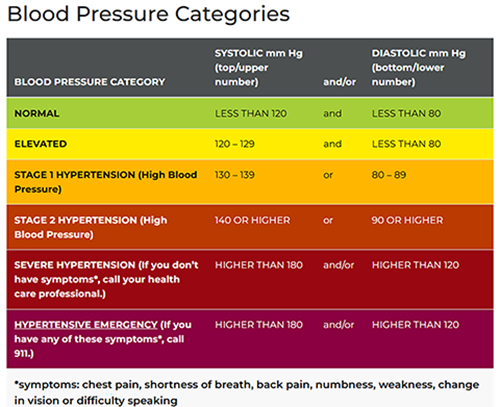What the New Blood Pressure Guidelines Mean for You
Preventing and managing high blood pressure has long been linked to healthy lifestyle behaviors. Things like reducing salt intake, staying physically active, maintaining a healthy weight, and managing stress are known to help keep blood pressure in check to reduce the risk of heart disease.
What’s New?
The newest guidelines on blood pressure released in August 2025 by the American Heart Association and the American College of Cardiology reaffirm the critical role of a healthy lifestyle in blood pressure control. But this time around, there’s a major change for those who drink alcohol.

Dr. Brandie Williams
“Previous guidelines allowed for some moderation of alcohol, two drinks per day for men and one for women,” according to cardiologist Brandie Williams, M.D., of Texas Health Heart & Vascular Specialists, a Texas Health Physicians Group practice. “Alcohol’s tie to high blood pressure and even dementia now suggest it’s better to skip liquor completely.
When it comes to high blood pressure, findings show that consuming alcohol increases blood pressure too much and makes it hard to manage blood pressure. There’s also stronger proof that high blood pressure is linked to an increased risk of cognitive decline and dementia.”
Why Blood Pressure Guidelines Matter
As statistics show, high blood pressure continues to be a major risk factor for heart disease, which is the leading cause of death in the U.S. – affecting nearly half of all adults. The serious consequences of high blood pressure on the heart and other organs prompts ongoing research and expert recommendations aimed at helping Americans turn the tide on stroke, heart failure, atrial fibrillation (AFib), and other effects of heart disease.
What Else Has Changed?
Instead of recommending blood pressure numbers below 140 over 90, the new guidelines emphasize 130 over 80 for a broader group of Americans. Stage 1 hypertension, or high blood pressure, is defined as a systolic blood pressure (top/upper number) greater than 130 mm Hg or a diastolic blood pressure (bottom/lower number) greater than 80 mm Hg.
“For patients who already had clinical heart disease, or a history of stroke, type 2 diabetes or kidney disease, the 130 over 80 has long been the goal,” Williams says. “Now, if you are older and have a lower cardiovascular risk, we’re still going to keep a closer eye on your blood pressure numbers. If they go above 130 over 80, we’ll initiate lifestyle changes for three to six months and check those blood pressures again.”
If you are someone who doesn’t have heart disease or other risk factors for the disease, Williams notes that you can likely go a little longer with blood pressure monitoring before any intervention may be needed.
How to Lower Your Blood Pressure
Healthy behaviors are a good first line of care for preventing and managing high blood pressure. And they can be easy to do.
Start by eating a healthy diet, says Williams. “We’ve seen an increase in salt and sodium in the American diet that has led to higher blood pressure. Sodium intake should be less than 2,300 mg per day, that’s about 1 teaspoon of salt, and we’d like to see most adults move toward an ideal limit of 1,500 mg per day. This can be done by checking food labels and refraining from eating packaged and restaurant foods as much as possible.”
Here are other ways to bring down your numbers that are American Heart Association-approved:
- Follow the DASH eating plan, which emphasizes reduced sodium intake and a diet high in vegetables, fruits, whole grains, legumes, nuts and seeds, and low-fat or nonfat dairy. It also includes lean meats and poultry, fish, and cooking with non-tropical oils.
- Engage in moderate physical activity of at least 75-150 minutes each week. Include aerobic exercise, such as cardio for your heart, and/or resistance training with weights.
- Try to manage stress with exercise and by incorporating stress-reduction techniques like meditation, breathing control, or yoga.
- Maintain or achieve a healthy weight with the goal of losing about 5 percent of your body weight to support overall health and help lower or prevent high blood pressure. If you weigh 180 pounds, that means losing 9 pounds to help lower your blood pressure.
- Check blood pressure regularly before, during, and after pregnancy to minimize risk of developing preeclampsia from high blood pressure.
Check out this article: Tips on Heart-Healthy Eating
The Takeaways
The new blood pressure guidelines reinforce the importance of healthy lifestyle behaviors. To help manage blood pressure, eat smart with a DASH-style diet, stay active your way, consider eliminating alcohol, and try stress-reducing activities. It’s also important to ask your primary care provider or cardiologist about other common health conditions that can lead to high blood pressure, such as being overweight.
“Anyone can develop high blood pressure. With a commitment to making healthier lifestyle choices, the diagnosis of high blood pressure doesn’t have to be a lifelong one. The available guidelines serve as a good roadmap for keeping heart disease at bay,” Williams says.
Learn more about your heart health or take our five-minute heart health assessment.


